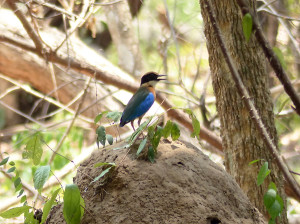
I have just finished a week away birding at Kaeng Krachan National Park and some nearby sites where we found a lot of really superb birds even though conditions made birding really difficult most of the time. This visit coinciding with migration there were a good number of scarce migrant species including many species of Flycatcher, Hooded and Blue-winged Pittas as well as many commoner migrants. Resident forest species are usually a highlight of Kaeng Krachan at this time of year and while things were quieter than normal April/May and rain on most afternoons, we enjoyed a good number of Woodpeckers, Broadbills and other colourful species. In this blog post I will talk about some of the groups of species we were lucky enough to see, along with photos from the trip.
Flycatchers
Our trip started a little slowly with only a small number of migrants at Sri Nakorn Kuen Khan Park, but we did see a few Flycatchers including our only Mugimaki Flycatcher, a subadult male, along with a single Asian Brown Flycatcher and Dark-sided Flycatcher.

Dark-sided Flycatcher by Nick Upton
During our trip we stayed at Ban Maka where initially dry conditions meant that there was a lot of activity near a small water drip at the restaurant, including both male and female Tickell’s Blue Flycatcher, c5 Asian Brown Flycatchers, c6 Yellow-rumped Flycatchers and a male Green-backed Flycatcher which was a very nice find.
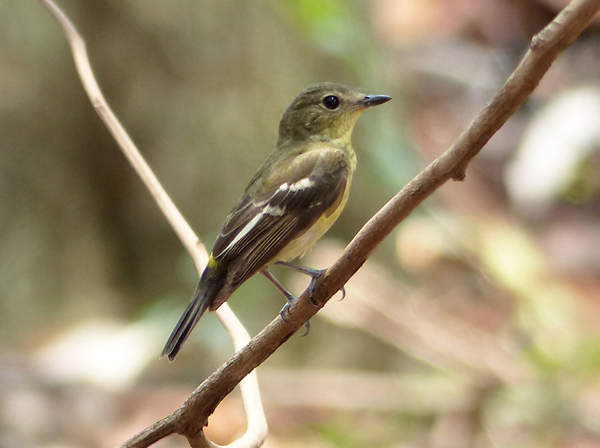
Female Yellow-rumped Flycatcher by Nick Upton
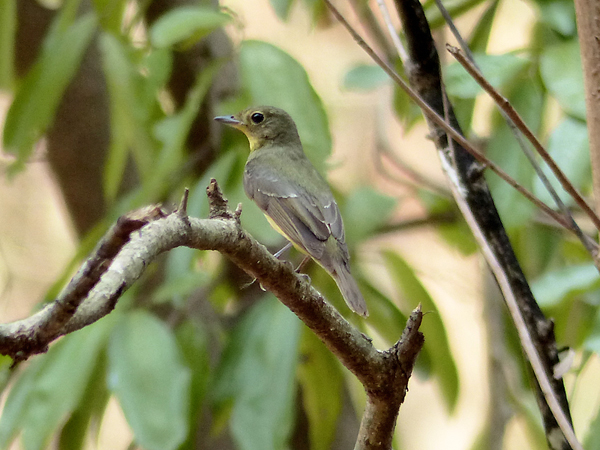
Green-backed Flycatcher by Nick Upton
There were also plenty of Yellow-rumped and Asian Brown Flycatchers in the national park but we also found another, scarcer migrant species – Ferruginous Flycatcher – one at Km 9 and another at Km 27.
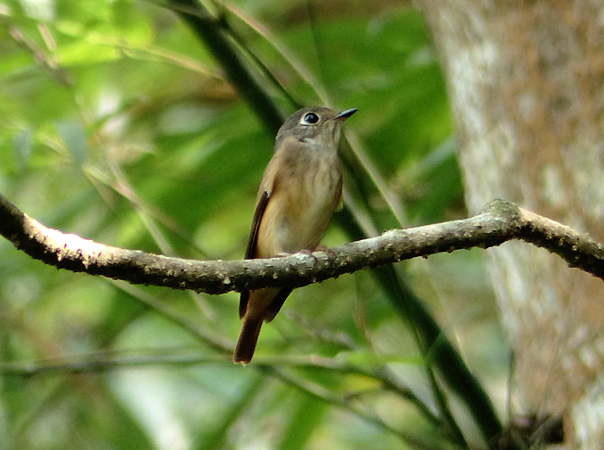
Ferruginous Flycatcher by Nick Upton
At higher altitudes the song of a couple of resident species was heard frequently; both Hill Blue Flycatcher and Rufous-browed Flycatcher. These species appeared fairly common but as skulking as they are it was not easy to see them but eventually we got great views of both.
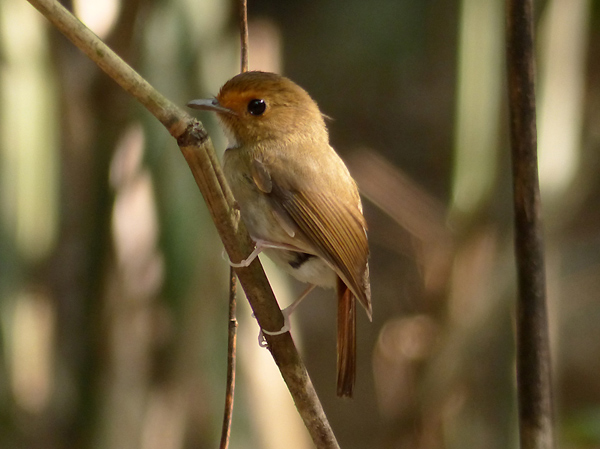
Rufous-browed Flycatcher by Nick Upton
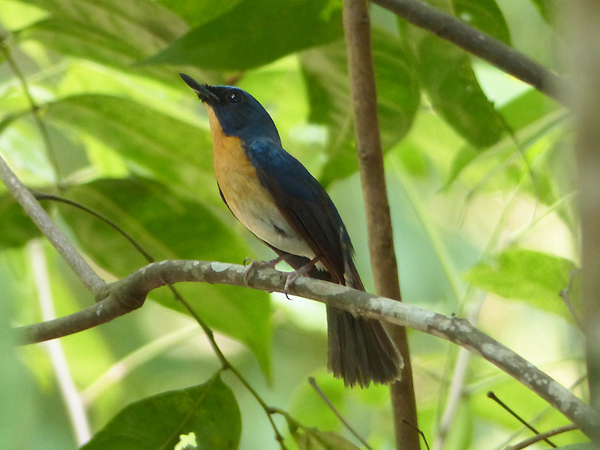
Hill Blue Flycatcher by Nick Upton
Pittas
This is always a highly sought-after set of birds but usually they are extremely difficult to find. However, at this time of year two migratory species arrive and are fairly easy to see – Hooded Pitta and Blue-winged Pitta. We saw several Blue-winged Pittas, both in the forest and at Ban Maka where we were able to get prolonged views as we ate lunch. Hooded Pitta took a little more effort but we got great views of one on our first morning in the forest after a short hunt for it.

Blue-winged Pitta by Nick Upton
We were keen to find Blue Pitta on this trip too but while it is a fairly common resident it is usually tough to see. Having not even heard any for some days we got good views of a Blue Pitta fairly easily at Km 29 after hearing two birds call nearby and just walking a few metres into the forest. This was excellent but just an hour or so later we proved to be exceptionally lucky with a Rusty-naped Pitta bathing in a small puddle in the road. Initially it disappeared into the forest but a short wait gave it time to come back out on to the edge of the road for great views!
Broadbills
Another exciting set of species but a little easier to see than Pittas, particularly at this time of year when they are nesting. We called in both Black-and-yellow and Banded Broadbills near stream 2 but Silver-breasted, Dusky and Black-and-red Broadbills proved very easy to see with birds at nests in the lowlands.
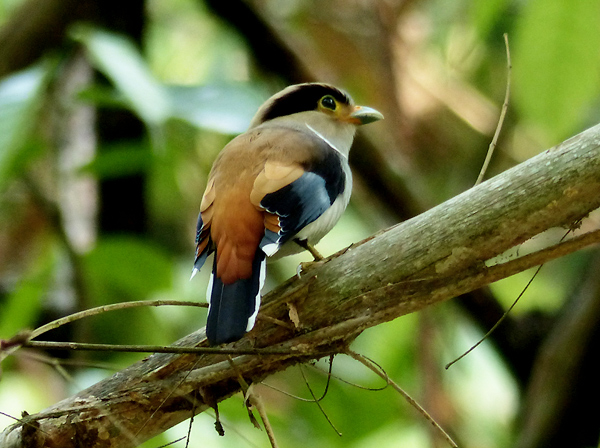
Silver-breasted Broadbill by Nick Upton
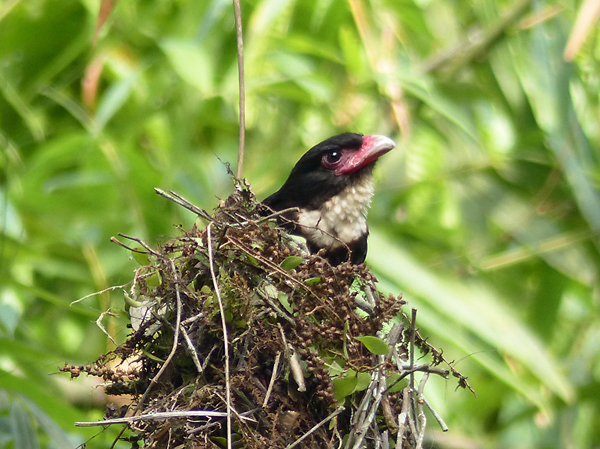
Dusky Broadbill by Nick Upton
These amazing birds are always great to see and with them being so active, building and attending their nests we were able to get lots of really good views of these birds. Further into the forest at Km 27 we came across a couple of Long-tailed Broadbill nests and were able to watch them go about their business; their constant tail-cocking being quite amusing.
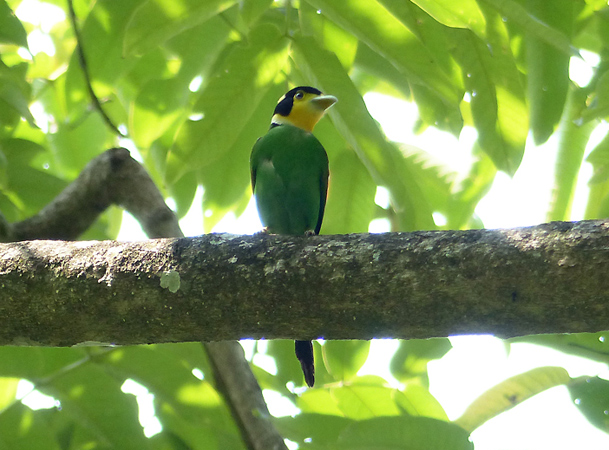
Long-tailed Broadbill by Nick Upton
A Big Surprise
After prolonged heavy rain all the previous afternoon and most of the night there were a lot of grounded migrants as we drove into the forest on 1st May and although we had other targets I was thinking about stopping and looking for something unusual. However, turning a corner there were a few parked vehicles and about 15 photographers taking pictures of what at first appeared to be a Crow. Wondering what the excitement over a Crow was I took a look through my binoculars to see that the bird in question was actually a Rook; a mundane species where it usually occurs but an amazing first record for Thailand!
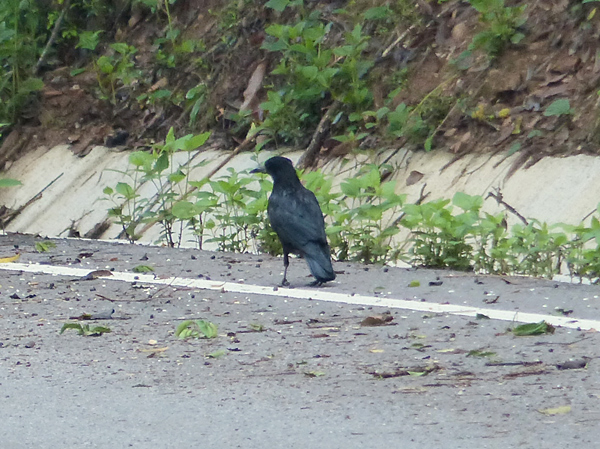
Rook by Nick Upton
Even in my poor quality photo it is obvious that the amount of white on the face is less than on Rooks in Western Europe so this is probably the eastern subspecies of Rook which I believe some have proposed to be split as Oriental Rook.
Waterbirds
Although most of our birding was done in the forest we did make some brief excursions into the rice fields near Petchaburi and Laem Pak Bia, as well as finishing our trip at Huay Mai Teng at Ratchaburi so we found quite a lot of waterbirds. Very handsome were good numbers of Chinese and Javan Pond Herons in breeding plumage as well as all the normal Egrets, although this one in the following photo seemed unusual with its yellow legs rather than just yellow feet.
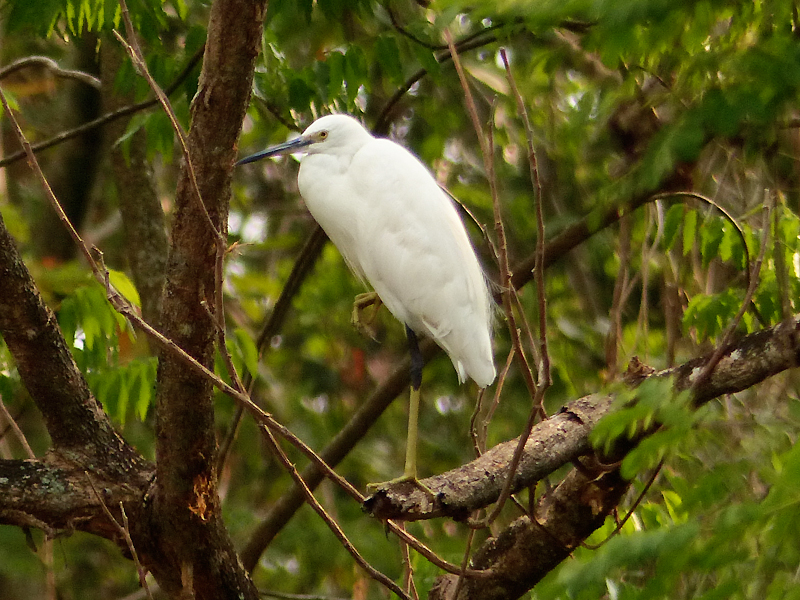 Little Egret by Nick Upton
Little Egret by Nick Upton
At Petchaburi rice fields we saw a couple of Black Bitterns in flight while at Sri Nakorn Kuan Khan park we had a close up meeting with a Yellow Bittern. At Wat Khao Takrao there were large numbers of Painted Storks and Spot-billed Pelicans along with smaller numbers of Black-headed Ibis but as much as we tried we could not find any Milky Storks.
One of the scarcest species we saw was a Malayan Night Heron flushed off of the road close to Ban Maka at around 7.15pm one evening but at Laem Pak Bia we came across a group of c100 Spotted Redshanks in breeding plumage as well as groups of Caspian Tern, Whiskered Tern, Brown-headed Gull and small numbers of commoner waders such as Common Greenshank.

Spotted Redshank by Nick Upton
Other Interesting Birds
Even though birding was slower than expected we did find a number of other interesting species during our stay including Heart-spotted Woodpecker, 2 wonderful Great Slaty Woodpeckers feeding close to us and unusual numbers of Red-headed Trogons and Ratchet-tailed Treepies at the higher altitudes. At one point we could see 4 different Red-headed Trogons at the same time!

Red-headed Trogon by Nick Upton
Past Panoen Tung campsite we were on the trail of Red-bearded Bee-eater and found an obliging individual shortly after spotting a small flock of feeding Pin-tailed Parrotfinches, a seldom-seen bird. Add to this list Orange-breasted Trogon, Buff-rumped Woodpecker, Great Hornbill, Collared Babbler, Black-throated Laughingthrush, Large Scimitar Babbler, Rufous Woodpecker and Black-headed Woodpecker at Khao Look Chang it is obvious that we amassed a large number of bird sightings over the course of our stay but it should be said that at times it felt very slow and birding required a lot of patience to be fruitful.


 May 6th, 2016
May 6th, 2016  Nick
Nick  Posted in
Posted in  Tags:
Tags: 










